Introduction
Musées, a treasure house of human history and culture, are now quietly undergoing a transformation.
Are you curious about what makes ancient museums glow with such a fresh modern charm? The answer may be hidden in those flashing interactive LED displays.
Table des matières
Reason 1: The key role of improving audience participation
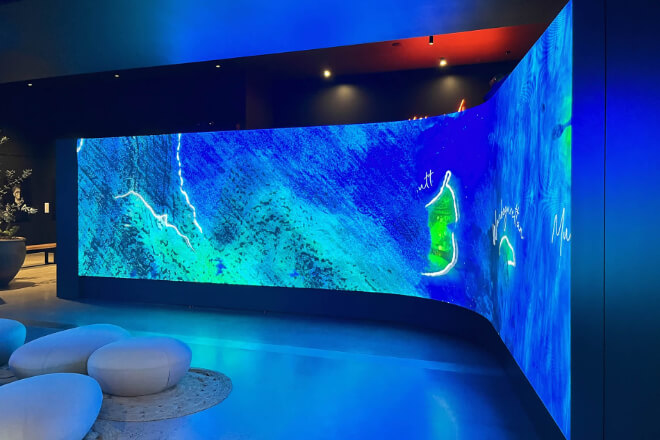
In museums, those traditional ways of displaying exhibits that can only be viewed from a distance are a bit “outdated.”
Now, interactive LED displays have become the “new favorite” in museums. Why? Because it can greatly improve the audience’s participation and make visiting museums super interesting!
Imagine that you are standing in front of a cultural relic display cabinet, separated by glass, and can only look at it from a distance. It’s itchy in your heart.
But with interactive LED displays, everything has changed. You just need to touch the screen lightly, and a high-definition picture of the cultural relic will pop up.
You can also zoom in and out to carefully look at the details that you can’t see clearly at ordinary times, such as the exquisite patterns on ancient porcelain and the tiny brushstrokes on ancient calligraphy and painting.
Moreover, a lot of relevant information will pop up on the screen, telling you what dynasty the cultural relic is from and what story it has, just like a “live guide” explaining it in front of you.
This feeling of hands-on exploration instantly turns the audience from “spectators” to “participants,” arousing their curiosity and thirst for knowledge and deepening their understanding and memory of cultural relics.
For example, the “Jinling Map” of Deji Art Museum is famous for its super strong interactivity.
Look at those interactive LED display screens that reproduce historical scenes, which are even cooler. For example, in the history museum, the screen can reproduce ancient war scenes.
You stand in front of the screen and swipe with your gestures to switch perspectives. Sometimes, you look down at the entire battlefield from the sky, and sometimes, you feel like a soldier on the front line, feeling the excitement of war up close.
This immersive experience makes the audience seem to have traveled through time and space and have an “intimate contact” with history.
The understanding of historical events is no longer dry text but vivid pictures and feelings. The fun and attraction of the museum are instantly overwhelming.
Moreover, the interactive LED display can also “change faces” according to the tastes of different audiences.
When children come, the screen will turn into an animated version of historical stories, which is cute and interesting.
When adults come, in-depth historical analysis and academic materials are provided to meet various needs.
This “private customization” experience allows everyone who enters the museum to find their own “dish,” and the sense of participation and satisfaction rises.
In the final analysis, the interactive LED display is the “magic wand” in the museum.
With a light wave, the audience is transformed from a “spectator” to a “protagonist,” making visiting the museum no longer a “cursory tour” but a wonderful journey full of exploration and discovery.
Reason 2: It can enrich the content and form of museum displays
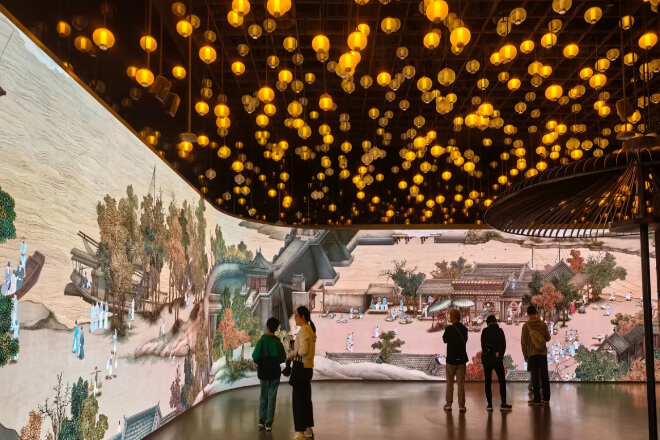
The interactive LED display in the museum is like a “super treasure box,” which makes the display content and form super-rich.
Imagine those delicate ancient books in the museum, which are afraid of being damaged if touched and could only be viewed from a distance before.
But now, the interactive LED display screen brings up high-definition pictures.
With just a click, the audience can see the details of the ancient books clearly and see detailed text interpretations, which is much clearer than seeing through the glass cabinet.
Let’s talk about the display form. In the past, cultural relics were just displayed there, but now, the interactive LED display screen can play new tricks.
For example, the display of ancient pottery is no longer a dry introduction but an animation showing the whole process from mud to finished products.
When the audience watches the animation, it is like traveling back to ancient times and seeing with their own eyes how the pottery was made step by step.
This dynamic display makes the cultural relics “alive,” and the audience is more excited.
Moreover, these screens can “change faces” and show different content according to the audience’s interests.
For example, in historical exhibitions, the audience can choose different historical periods and deeply understand the details of that era. This personalized experience allows everyone to find their own interests.
Many museums abroad also use this kind of screen. For example, the Statue of Liberty Museum in New York has an immersive theater that is open as soon as you enter the door.
The audience watches documentaries through interactive LED displays and learns about the story of the Statue of Liberty.
There is also an inspiration gallery where visitors can add their own self-portraits and inspirational sentences to the digital murals, making them feel like they are part of the story of the Statue of Liberty. This interaction makes the visiting experience even better.
In general, the interactive LED display makes the museum’s display content no longer monotonous and more diverse in form.
Visitors can not only see more clearly but also have more fun. Adults and children can have fun in the museum.
Reason 3: It can adapt well to the needs and aesthetics of modern audiences
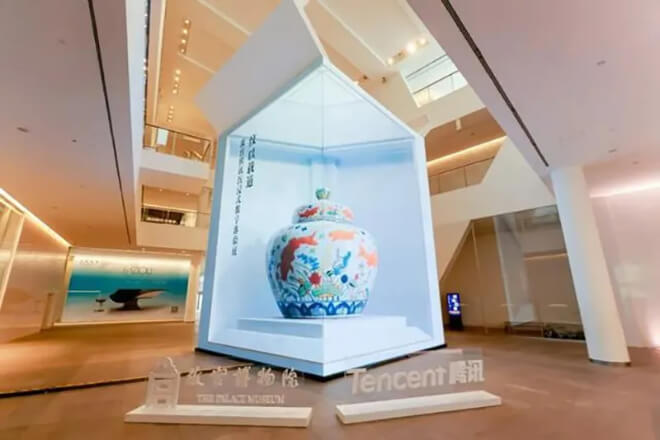
In today’s fast-paced, technological era, the audience’s aesthetics and information acquisition habits have undergone earth-shaking changes.
People prefer things that are intuitive, interactive, and interesting, and the traditional museum model, the way of quietly and coldly displaying cultural relics, obviously makes it difficult to attract the attention of the younger generation.
However, the emergence of interactive LED displays is like injecting fresh vitality into the museum, allowing the museum to keep up with the pace of the times and become lively.
Let’s talk about today’s young people. They slide around on their mobile phones and computers every day and are used to this interactive way of obtaining information. Interactive LED displays cater to this point.
It is no longer a simple matter of putting pictures of cultural relics or introductory text on the screen, but through various clever designs, the audience can participate in it.
For example, some museums use interactive LED displays to hold digital art exhibitions.
When the audience stands in front of the screen and touches it lightly, the colorful digital artworks will change accordingly, as if they have come to life.
Even more, the audience can create digital artworks on the screen by themselves.
This sense of participation and achievement makes the audience feel that the museum is no longer a place that is high above and can only be viewed from a distance but an interesting space where they can explore and create by themselves.
Some museums also hold historical and cultural interactive game activities, which makes the advantages of interactive LED displays come to the fullest.
Imagine that at the Brooklyn Museum in New York, children and parents gathered in front of the interactive LED display to participate in the ancient civilization adventure game.
They followed the prompts on the screen and solved the puzzles step by step as if they really traveled back to ancient times and took adventures with historical figures.
This kind of game not only allows children to learn historical knowledge while playing but also allows parents to feel the fun of the museum.
Everyone laughs and has fun together.
Once these activities are spread through social media, the museum’s popularity and influence will rise immediately.
More and more people are beginning to pay attention to museums and are willing to go into museums to see what’s new there.
Museums are no longer synonymous with tradition and dullness but a cultural space full of modern technology and fashion.
Reason 4: It can help expand the educational function of museums
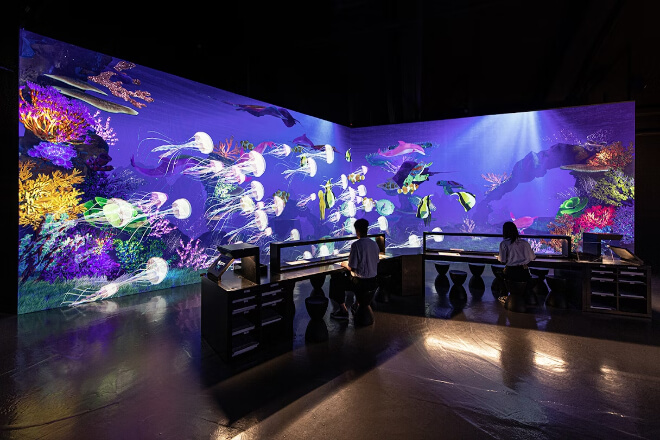
The interactive LED display screen in the museum is simply an “éducation magician” that can bring the educational function of the museum to its fullest, allowing people of different ages and different levels of knowledge to find their own learning fun in the museum.
Let’s talk about children first. They are curious, but their attention is easily distracted.
The museum uses interactive LED displays to tailor a lot of interesting historical and cultural interactive games for them.
Imagine that children stand in front of the screen and tap their fingers lightly to embark on an adventure of ancient civilization with cartoon characters on the screen.
They searched for treasures, solved puzzles in the game, and learned a lot of historical knowledge without realizing it.
This game-based learning method not only makes children feel fun but also allows them to remember a lot of things during the game, and the museum has become a “big playground” in their eyes.
For students and researchers, the interactive LED display is an “academic treasure house.”
Students can view high-definition pictures of cultural relics, zoom in on details, and see related academic papers and research materials by touching the screen.
For example, a student studying ancient art can use the screen to gain an in-depth understanding of the production process and historical background of cultural relics and even exchange ideas with other scholars online.
This in-depth learning experience helps them go further in academic research and makes the museum an important learning resource platform.
The most amazing thing is that the interactive LED display can also make the museum’s educational resources “fly” to farther places.
Through network connections, museums can share these rich educational resources with schools, communities, and even farther places.
For example, the Museum of Natural History in New York shares the museum’s educational resources with schools across the United States through network connections.
Students can connect to the museum’s interactive LED display screen through the school’s computer or tablet to participate in virtual exhibitions and interactive courses.
This remote education method not only benefits more students but also enhances the social education value of the museum.
Reason 5: It can enhance the museum's brand image and competitiveness
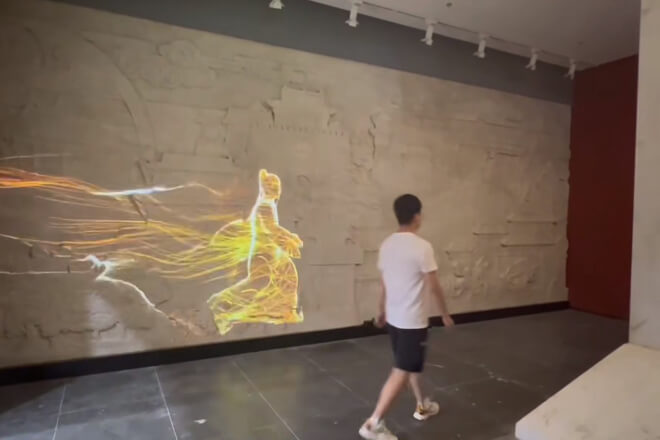
In today’s era of increasingly rich cultural consumption, if museums want to attract audiences and stand out, they must have some “killer weapons.”
Interactive LED display screens are the “trump card” of museums, which can make museums shine among many cultural venues and enhance their brand image and competitiveness.
Imagine that the audience walks into the museum and sees those cool interactive screens.
Not only can they touch and enlarge the details of the cultural relics, but they can also see high-definition 3D models and animation displays.
This modern and technological experience makes the audience feel bright and think that this museum is very “trendy” and “cool.”
For example, the Louvre in Paris has added interactive LED displays to some exhibitions in recent years.
The audience can use the screen to gain an in-depth understanding of the background of Mona Lisa’s creation and see high-definition details from different angles.
This kind of technological display not only makes the audience feel fresh but also enhances the modern image of the museum, making the Louvre stand out among many museums.
With the interactive LED display, the attraction of the museum has greatly increased. The audience can not only see rich display content on the screen.
They can also get a deeper understanding of cultural relics and history through interactive games, personalized experiences, and other methods.
This unique experience makes the audience more impressed with the museum and naturally attracts more people to visit.
For example, the Natural History Museum in New York, through interactive LED displays, allows the audience to observe the details of dinosaur fossils closely, and they can also participate in interactive games to understand the living habits of dinosaurs.
This interactive experience not only attracts a large number of tourists but also spreads through channels such as social media, which enhances the popularity and reputation of the museum.
Many museums have improved their brand image and competitiveness through interactive LED displays.
For example, the Australian Museum uses interactive LED displays in the dinosaur exhibition hall.
Visitors can see high-definition 3D models of dinosaur fossils by touching the screen and can also understand the evolution of dinosaurs.
This interactive experience not only makes the audience feel interested but also enhances the museum’s sense of technology and modern image.
Through this innovative display method, the Australian Museum has attracted a large number of tourists and increased its popularity and reputation.
6. Conclusion
The interactive LED display, the “magic wand” in the museum, is reshaping our understanding of the museum in its unique way.
It not only turns the audience from passive viewers to active explorers but also allows the museum to inherit culture while keeping up with the pace of the times, showing unlimited vitality and charm.
Enfin, si vous souhaitez en savoir plus sur les écrans LED, merci de nous contacter.
